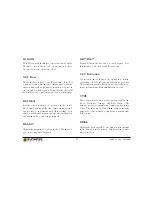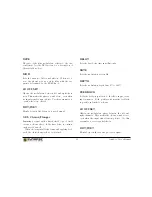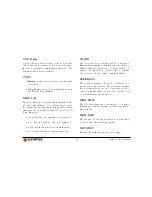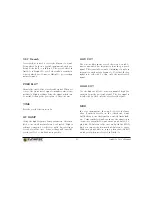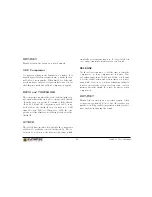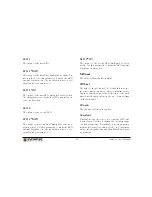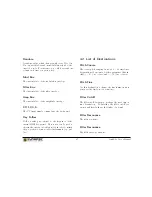
RESO
If the output of a filter is fed back to its input, reso-
nance occurs, which is a sinusodial oscillation near the
cutoff frequency (see fig. 3.4). The RESO knob con-
trols the depth of this effect. At lower settings, reso-
nance can be used to add presence to a sound. Using
higher settings, the sinusodial oscillation gets strong
enough to use the filter in a similar fashion as an oscil-
lator (try setting the low-pass filter to maximum reso-
nance, with Key Track set to 100% and Cutoff to 0%).
This property is furthermore useful to create special
effect sounds such as laser guns, electronic bass drums
etc.
Frequency
Magnitude
Cutoff frequency
Resonance
Figure 3.4: Response of a resonant low-pass filter.
ENV
This knob controls how much the filter envelope (de-
scribed later in this chapter) affects the cutoff fre-
quency. Set to zero, the filter envelope has no effect on
the cutoff frequency. At 100%, the envelope spans the
entire cutoff range from the minimum to the maximum
value.
Most sounds will use a low-pass filter with an enve-
lope amount setting in between the two extremes and
the envelope attack and sustain set to their minimum
values. This creates the most common timbre which
is a bright start followed by a darker sustain stage, a
property shared by many acoustic instruments.
In rare cases, you may also want to set the envelope
amount to a negative value. This can be helpful to
create sounds which become bright when releasing a
key. A negative envelope amount can be set using the
modulation matrix, with the envelope amount knob
set to zero.
KEY TRACK
The key track parameter determines how much the
cutoff frequency is affected by the MIDI key note. Set
to zero, all notes share the very same cutoff frequency
as specified by the
CUTOFF
parameter. Nonzero
values move the cutoff according to the key pressed,
with higher keys corresponding to higher cutoff fre-
quencies.
12
Antidote User’s Manual
Summary of Contents for Antidot
Page 1: ...User s Manual...



















